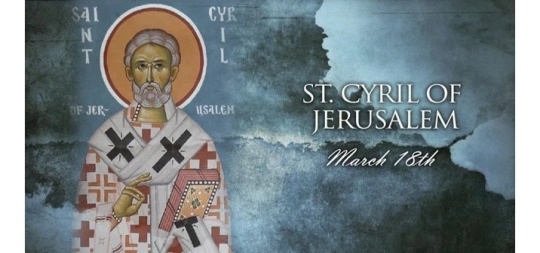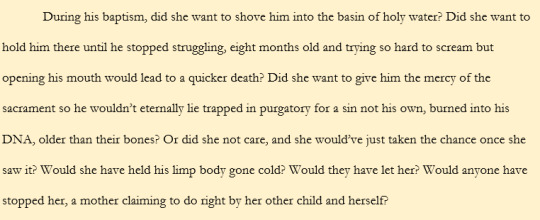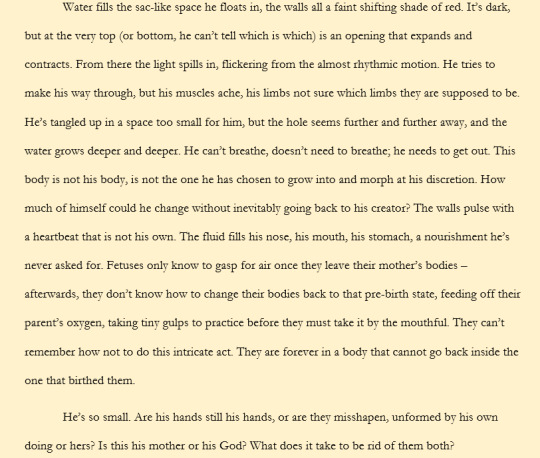#St Cyril
Explore tagged Tumblr posts
Text
Equals of the Apostles and Teachers of the Slavs, St. Cyril and St. Methodius

Christ is with us! He is and always shall be!
In school, we are often taught that Martin Luther was the first to translate the Bible into a common language for all to understand. And while Martin Luther did translate the Bible from Latin to German for the common folk to understand, he was not the first to accomplish this feat. There are two saints who had achieved this over 700 years prior. These saints are Saints Cyril and Methodius.
~~~~~~~~~~~~~~~~~~~~~~~~~~~~~~~~~~~~
St. Methodius and St. Constantine (Feast Days May 11th and 24th) were brothers born in Thessalonica. St. Methodius, the oldest of seven brothers, was in the military and became governor in one of the Slavic principalities that were dependent on the Byzantine Empire. This made it possible for him to learn the Slavic language. Ten years later, St. Methodius became a monk on Mount Olympus.
St. Constantine was a smart man who studied with emperor Michael under the finest teachers in Constantinople. One such teacher was Saint Photius, who would later become the Patriarch of Constantinople (February 6). St. Constantine also studied all the current sciences and knew several languages. He studied the works of St. Gregory the Theologian. Because of his wealth in knowledge, St. Constantine became know as the “Philosopher”. After completing his education, the Saint was ordained into holy priesthood and appointed the curator of the patriarchal library at the church of Hagia Sophia. However, he soon left the capital and secretly went to a monastery. Being discovered there, he went back to Constantinople where he was appointed as an instructor in philosophy. While there, he even won a debate against Ananias, the leader of the iconoclasts. After this victory, the emperor sent Constantine to discuss the Holy Trinity with the Saracens, who were people who professed Islam. He also gained a victory against them. After he returned, he went to St. Methodius and spent his time in unceasing prayer and reading the works of the holy Fathers.
Soon, the emperor summoned both of the brothers and sent them to preach the Gospel to the Khazars, a semi-nomadic Turkic people. During their journey, they stayed in the city of Korsun in order to make preparations. While there, they discovered the relics of the hieromartyr Clement, Pope of Rome (November 25).
While in Korsun, St. Constantine found a Gospel and Psalter written in Slavonic (Russian letters) and a man who spoke the Slavic tongue. He learned from this man how to read and speak the language. Eventually the brothers arrived at the Khazars, where they won a debate with the Jews and Muslims by preaching the Gospel. On their way back, the brothers visited Korsun and took up the relics of St. Clement. Then, they returned to Constantinople.
Later, they were called by Moravian prince Rostislav to instruct his people in the Orthodox Faith. Along with the help of their disciples Gorazd, Clement, Savva, Naum, and Angelyar, they devised a Slavonic alphabet and translated the books that were necessary for the celebration of the divine services. They translated the Gospel, Epistles, Psalter, and collected services into the Slavic tongue. This occured in the year 863, over 700 years before Martin Luther translated the New Testament.
After they completed the translation, the holy brothers went to Moravia, where they began to teach the services in the Slavic language. This angered the German bishops, who celebrated the divine services in the Moravian churches in Latin. They were convinced that the divine services should be done in one of three languages: Hebrew, Greek, or Latin. However, St. Constantine said, “You only recognize three languages in which God may be glorified. But David sang, ‘Praise the Lord, all nations, praise the Lord all peoples (Psalm 116/117:1)’.’ Humiliated and bitter, the bishops complained to Rome.
The holy brothers were then summoned to Rome for a decision to be made on the matter. As they set off to Rome, the brothers took with them the relics of St. Clement. Knowing that they were bringing these relics with them, Pope Adrian met them along the way with his clergy. The brothers were greeted with honor and the Pope gave permission to have the divine services in the Slavonic language. He then ordered the books translated by the brothers to be placed in the Latin churches, and to serve the Liturgy in the Slavonic language.
While in Rome, St. Constantine fell ill and the Lord revealed that he would die. So, he was tonsured into the monastic schema with the name of Cyril. On February 14, 869, St. Cyril died at the age of 42. Before he died, St. Cyril commanded St. Methodius to continue their task of enlightening the Slavic people with the true Faith.
After St. Cyril’s death, the Pope sent Methodius to Pannonia, a province of the Roman Empire, and consecrated him as Archbishop of Moravia and Pannonia. In Pannonia, St. Methodius and his disciples continued to distribute service books written in the Slavonic language. This once again angered the German bishops, who arrested and tried the Saint. The Saint was sent to Swabia where he endured several sufferings for two and a half years.
After being set free by the order of Pope John VIII of Rome and being restored to his archdiocese, St. Methodius continued to preach the Gospel to the Slavs. He baptized the Czech prince Borivoi and his wife Ludmilla (September 16), as well as one of the Police princes. The German bishops began to persecute him again because he did not accept the heretical teaching of the Holy Spirit proceeding from both the Father and Son. St. Methodius was summoned to Rome where he was able to justify himself before the Pope and preserve the Orthodox teaching. Afterwards, he was sent to Velehrad, the capital of Moravia.
Velehrad is where he spent the remaining years of his life. St. Methodius spent the rest of his life, with the assistance of two of his former pupils, translating the entire Old Testament into Slavonic. The only books he did not translate was the Book of Maccabbess, the Nomocanon (Rule of the Holy Fathers) and Paterikon (book of the Holy Fathers).
Before he died, St. Methodius designated one of his students, Gorazd, as a worthy successor to himself. The saint predicted the day of his death and died on April 6, 885, at the age of 66. The saint’s burial service was chanted in three languages, Slavonic, Greek, and Latin.
~~~~~~~~~~~~~~~~~~~~~~~~~~~~~~~~~~~~
The story of Sts. Cyril and Methodius is an amazing one. As a STEM student, I found it fascinating that St. Cyril had studied all of the current sciences of his time. And as someone who is continually seeking knowledge, his story gave me a sense of hope that I can use what I learn to glorify God and to spread His message.
We should keep the spirit of Sts. Cyril and Methodius as we approach the modern era. Today, thanks to the Internet, we are connected to people from all around the world that come from all sorts of cultures. One thing I do appreciate from the Protestant movement is that there is a passion to translate the Bible into other languages and go out among other cultures to spread it. It does help spread the Gospel and we ought to do as Orthodox Christians.
But on a more local issue, we should focus on making our services more accessible to people in the West. In the US, where I’m from, I’ve seen a problem where the liturgy is not performed in English. While I understand having the liturgy in for example, Greek, for new immigrants, it also cuts off any potential new converts for the local population. Having the liturgy mostly in English or even a Spanish service could help our population greatly. But this is just my humble opinion.
Until next time and may God bless all of you!
- Joanna
~~~~~~~~~~~~~~~~~~~~~~~~~~~~~~~~~~~~
Sources:
“Equals of the Apostles and Teachers of the Slavs, Cyril and Methodius.” Orthodox Church in America, https://www.oca.org/saints/lives/2001/05/11/101350-equals-of-the-apostles-and-teachers-of-the-slavs-cyril-and-metho.
“Methodios & Cyril, Equal-to-the Apostles Illuminators of the Slavs - Greek Orthodox Archdiocese of America.” Go to Greek Orthodox Archdiocese of America, https://www.goarch.org/chapel/saints?contentid=486&type=saints.
#Eastern Orthodox#Orthodox Saint#Greek Orthodox#Slavonic#St Cyril#St Cyril and Methodius#St Methodius#Bible Translation#God#Church History#New Testament#Old Testament#article
12 notes
·
View notes
Text

514x800 Saints Cyril and Methodius, painting by Jan Matejko, 1885
0 notes
Text
Too much

Everyone has their breaking point, right?
That point at which they have absolutely had it. When they finally had to end the relationship or quit the job. Because they can’t take it anymore and they are done.
We’ve all been there.
We’ve all been the one to make the break. You and I have gotten to that point. Where we had to leave for our own mental wellbeing, our physical health, or both.
But that’s not the only reason why you and I know about that breaking point, is it?
We hate to admit it, but there are times when you and I have been on the other side of that breaking point.
Where we have been the one that someone had to make the break with.
Because we kept screwing things up. Or we were stuck in unhealthy patterns. Or we couldn’t get over ourselves. Or we didn’t make time for them. Or any of a million other ways it becomes too much.
Because everyone has their breaking point.
We’re so used to finding that breaking point with other people – and even with ourselves – that we just assume God works the same way.
And that we’re going to screw things up. Or fall back into our unhealthy patterns. Or get full of ourselves. Or make time for everything but God. Or whatever it is.
One time too many. And we’re going to find out that God has a breaking point too.
Which is exactly what we don’t see in today’s Gospel – with the woman caught in adultery.
Jesus doesn’t give her one last chance. Or tell her that it’s too late.
Instead, Jesus forgives her.
And lets her know that her life doesn’t have to be this way.
That even if she doesn’t see it, she is more than her flaws, her faults, her failings.
“Neither do I condemn you. Go and sin no more.”
Tradition says that St. Cyril of Jerusalem (today’s saint) had a vision of Jesus meeting her again after the Resurrection. After she had fallen back into her old ways.
When they met, she was so ashamed that she couldn’t even meet His eyes. Jesus gently lifted up her head and softly said to her again,
“Neither do I condemn you. Go and sin no more.”
Today’s Readings
#Too Much#Mercy#God's Mercy#Go and Sin No More#God's Forgiveness#St. Cyril#God#Jesus#Catholic#Christian#Church#Catholicism#Moments Before Mass
32 notes
·
View notes
Text

#Speedway#1934#linocut#modernism#sybil andrews#artist#1898#1992#Bury St Edmunds#england#campbell river#british columbia#canada#cyril power
18 notes
·
View notes
Text

Saint Cyril of Alexandria
Doctor of the Church
376-444
Feast Day: June 27 (New), February 9 (Trad)
Patronage: Alexandria, Egypt
Saint Cyril of Alexandria championed the teaching concerning Christ’s one divine Personhood against Nestorius. He wrote extensively clarifying the doctrine concerning the Trinity, theological formulas, and the doctrine of Mary as Mother of God. He had a staunch adherence to the truth, yet, as Bishop of Alexandria, he was impulsive, imprudent, and sometimes harsh dealing with his flock and fellow bishops. He is known as the “Tower of Truth and interpreter of the Word of God made flesh.”
Prints, plaques & holy cards available for purchase here: (website)
62 notes
·
View notes
Text
Quote/s of the Day – 2 July – Hail, O Mary, Mother of God
Quote/s of the Day – 2 July – The Visitation of the Blessed Virgin Mary Hail, O Mary, Mother of GodBy St Cyril of Alexandria (376-444)Father & Doctor of the Church Hail, O Mary, Mother of God,Virgin and Mother!Morning Star, perfect vessel.Hail, O Mary, Mother of God,Holy Temple in which GodHimself was conceived.Hail, O Mary, Mother of God,Chaste and pure dove.Hail, O Mary, Mother of God,who…

View On WordPress
#anonymous#blessed shall be her name#catholic#feast of the visitation#hail o mary mother of gody#MOTHER of GOD#roman catholic#st cyril of alexandria#unknown
7 notes
·
View notes
Text
SAINT OF THE DAY (March 18)

On March 18, the Roman Catholic Church honors St. Cyril of Jerusalem, a fourth-century bishop and Doctor of the Church whose writings are still regarded as masterful expressions of Christian faith.
St. Cyril is also remembered for his exhaustive Biblical knowledge and his endurance in the face of misunderstanding and opposition.
Eastern Catholics and Eastern Orthodox Christians, who likewise celebrate him as a saint on March 18, also remember him on May 7 — the date of a miraculous apparition said to have occurred soon after his consecration as a bishop.
What we know of Cyril's life is gathered from information concerning him from his younger contemporaries — Epiphanius, Jerome and Rufinus, as well as from fifth-century historians — Socrates, Sozomen and Theodoret.
Cyril was most likely born in Jerusalem around the year 315, shortly after the legalization of Christianity throughout the Roman Empire.
Although that legalization put a stop to many of the persecutions that threatened the Church for two centuries, it indirectly gave rise to a number of internal controversies — both in regard to theology and the jurisdiction of bishops in which Cyril would find himself involved.
Cyril received an excellent education in classical Greek literature as well as the Bible.
He was ordained to the priesthood by Bishop Maximus of Jerusalem and succeeded him as bishop in 348.
During his early years as a bishop, most likely around 350, he delivered a series of lectures to new initiates of the Catholic Church.
Twenty-four of the lectures have survived and are studied today.
In a 2007 general audience, Pope Benedict XVI praised the saint for providing an “integral form of Christian instruction involving body, soul, and spirit.”
"St. Cyril's teaching," the Pope said, remains emblematic for the catechetical formation of Christians today."
In 351, three years after Cyril became the Bishop of Jerusalem, a large cross-shaped light appeared for several hours in the sky over the city — an event that many interpreted as a sign of the Church's triumph over heresy.
It could also, however, be understood as a sign of the suffering the new bishop would undergo in leading his flock.
Unlike many other Eastern bishops and priests of the fourth century, Cyril did not allow his classical learning to lead him away from believing in the full humanity and divinity of Christ.
However, the man who consecrated Cyril as a bishop, Archbishop Acacius of Caesarea, was an ally of the Arians who claimed that Jesus was a creature and not God.
Because of his connection to the archbishop, Cyril himself was unjustly suspected of heresy by many of his brother bishops.
But he also found himself at odds with Archbishop Acacius, who claimed to have jurisdiction over the birthplace of the Church.
Altogether, these disputes led to Cyril being exiled from Jerusalem three times in the course of 20 years.
Cyril first took refuge with Silvanus, Bishop of Taraus. He appeared at the Council of Seleucia in 359 in which the semi-Arian party was triumphant.
Acacius was deposed and Cyril seems to have returned to his see. But the emperor was displeased at the turn of events.
In 360, Cyril and other moderates were again driven out and only returned at the accession of Julian in 361.
In 367, a decree of Valens banished all the bishops who had been restored by Julian, and Cyril remained in exile until the death of the persecutor in 378.
In 380, St. Gregory of Nyssa came to Jerusalem on the recommendation of a council held at Antioch in the preceding year.
He found the Faith in accordance with the truth and expressed admiration of his pastoral efforst, but the city was a prey to parties and corrupt in morals.
In 381, Cyril participated in the Second Ecumenical Council, which condemned two different forms of Arianism and added statements about the Holy Spirit to the Nicene Creed of 325.
Cyril of Jerusalem died in 387. He was named a Doctor of the Church by Pope Leo XIII in 1883.
4 notes
·
View notes
Text
“That anyone could doubt the right of the holy Virgin to be called the Mother of God fills me with astonishment. Surely she must be the Mother of God if our Lord Jesus Christ is God, and she gave birth to Him! Our Lord’s disciples may not have used those exact words, but they delivered to us the belief those words enshrine, and this has also been taught us by the holy fathers.”
- St. Cyril of Alexandria
29 notes
·
View notes
Video
youtube
Watch This Amazing Landing At Cyril E. King - US Virgin Islands - Spirit...
#youtube#cyril e. king#cyril e king airport#st thomas#st thomas airport#us virgin islands#landing#airport#spirit airlines#spirit airlines landing#spirit airlines landing at cyril e king airport#msfs 2020#watch this#amazing landing
2 notes
·
View notes
Text
WIP Update - Replace Their Bones with Doll Parts
I've decided to try to write a more coherent post on some of the recent progress on the novel. For those who read my intro post, I did change the pronoun in the title (I can't decide on if I should use "he" or "they" solely because, well, Cyril's not really a he by the end of the novel).
I did make some changes to a chapter I talked about in an earlier post (Anatomy Practice), but for this update, I'm going to focus on some overarching stuff + a later chapter that I worked on recently.
I will, though, reiterate this paragraph because I'm obsessed with it:

I'll talk about it another time, because of FUCK does this need a longer separate post (I call it the I guess thematic thesis of the novel in a way?? in how it establishes a LOT of Cyril's mental state throughout the novel and gives us the starting point from which he somehow manages to keep going downhill).
Immaculate Perpetuation
The chapter title comes from two terms relating to the Virgin Mary (or versions of the Virgin): immaculate conception, and Our Lady of Perpetual Health. Except, a big thing in this book is continuing cycles of generational abuse as well as toxic dynamics, so I sort of mashed things together into this.
To make it clear again in this post, Cyril's mixed: his father is a rich white guy, his mother is Latinx (Central American specifically, the country isn't specified for reasons so I won't say it but for reference my parents are Salvadoran). Cyril looks like his mother a LOT. She also had significant issues physically and mentally during and after pregnancy. All of this has led to them having an extremely strained relationship where they hardly interact.
Anyways. Cyril imagines whether or not she wanted to drown him during baptism (TW for imagined infanticide I guess??)

To be very clear, this didn't happen. He's spiraling.

The first sentence references a (still not quite edited) part about her ignoring him when he cried as a baby, as told to him by his older half-brother.
At the end of this chapter, he has a dream about drowning in a womb.

(Fun fact: I started editing this section during @coffeeandcalligraphy's livestream the other day. I asked for permission before tagging. If you read this Rachel, I deeply apologize but figure you may appreciate the disaster main character content lmao.)
Lines that I'd like to also mention:
His skin raisins, his insides burning.
Trying to play with verbs more? This isn't my best, just one I appreciate.
He is a body and he is a wound.
I was going to post that whole paragraph, but I'm not super happy with it yet.
Also, this isn't part of this chapter, but it's got a similar theme.

He's my babygirl.
I'm going to wait since this post is long enough, but other excerpts I definitely want to share include the vampire dream (it's relevant I swear) and possibly some of the more religious imagery, in which I cannot figure out if Cyril is comparing himself to Jesus, Judas, or the snake. Or all three. Genuinely would love to make a uquiz out of this.
#polaris writes#i'm not sure how quite to tag this but im going to use some for just the project#for organization reasons#and i'll go back and tag other posts similarly#honestly this isnt my BEST writing probably but i like it so im posting it#replace their bones with doll parts#yes i call it shorter things when talking about it with friends#also cyril's name is vaguely pretentious on purpose his dad is white and i couldn't think of a better name after seeing it somewhere#fun fact there are two st cyrils! ive added a normal amount of religious symbolism!#writeblr
2 notes
·
View notes
Note
I was about to recommend St. Catherine of Sienna and-or St. Hildegard von Bingen, also St. Jadwiga of Poland, but I see You've already got them all, so You can treat this ask as their propaganda.
Among traditional/folk Saints I can think of St. Florian (commonly venerated as a patron of firefighters), St. Maurice, and Saints Cosmas and Damian (patrons of doctors).
Among others: St. Cyril and Methodius (apostles of the Slavs) St Joseph of Cupertino (patron of pilots, astronauts and people with learning disabilities)
there's also St. Hyacinth of Poland, legends of whom associate him with pierogi :D
OOOOOOOH SO MUCH GREATNESS IN JUST ONE ASK!
Ok, votes added for St Catherine of Siena, St Hildegard, St Hedwig, St Hyacinth, and St Joseph of Cupertino.
New entries created for Sts Cyril and Methodius (package deal), the Slavic missionaries. SUPER fun fact: their feastday is February 14 and I prefer to celebrate that than St Valentine.
As for the folk/traditional saints - too late to add them to the bracket! :(
#st catherine of siena#st hildegard of bingen#st hedwig#st jadwiga#st hyacinth#st joseph of cupertino#sts cyril and methodius#catholic saint tournament
1 note
·
View note
Text
"Kill them with kindness" Wrong. CURSE OF SIMEON
А Б В Г Д Е Ж З И Й К Л М Н О П Р С Т У Ф Х Ц Ч Ш Щ Ъ Ь Ю Я
“kill them with kindness” Wrong. CURSE OF RA 𓀀 𓀁 𓀂 𓀃 𓀄 𓀅 𓀆 𓀇 𓀈 𓀉 𓀊 𓀋 𓀌 𓀍 𓀎 𓀏 𓀐 𓀑 𓀒 𓀓 𓀔 𓀕 𓀖 𓀗 𓀘 𓀙 𓀚 𓀛 𓀜 𓀝 𓀞 𓀟 𓀠 𓀡 𓀢 𓀣 𓀤 𓀥 𓀦 𓀧 𓀨 𓀩 𓀪 𓀫 𓀬 𓀭 𓀮 𓀯 𓀰 𓀱 𓀲 𓀳 𓀴 𓀵 𓀶 𓀷 𓀸 𓀹 𓀺 𓀻 𓀼 𓀽 𓀾 𓀿 𓁀 𓁁 𓁂 𓁃 𓁄 𓁅 𓁆 𓁇 𓁈 𓁉 𓁊 𓁋 𓁌 𓁍 𓁎 𓁏 𓁐 𓁑 𓀄 𓀅 𓀆
#this was funnier in my head#tsar simeon#info dump on the cyrillic alphabet:#it was adapted from the glagolithic alphabet which was created by st cyril and st methodius#the cyrillic alphabet was created in bulgaria in the late 9th century (most probably in the 880s) by st kliment of ohrid#there is a dispute regarding the authorship and it's widely accepted st kliment adapted the glagolithic script#imo st naum of ohrid must've also taken part in this work since he was another of st st cyril and methodius' students#in 893 the cyrillic alphabet was make the official alphabet by tsar simeon#the holy brothers created our alphabet indirectly. lol#kliment ur my only ho
184K notes
·
View notes
Text
Archaeologists Research Two Noble Families in First Bulgarian Empire’s Capital Veliki Preslav
Part of the ruins of medieval Bulgarian capital Veliki Preslav (Great Preslav), First Bulgarian Empire. Photo: National Institute and Museum of Archaeology, Europeana Carare Project Archaeologists are researching the lives of two noble families from Veliki Preslav (“Great Preslav”), the capital of the First Bulgarian Empire in 893-970 AD during the excavation of an early medieval monastery there,…
#excavations#First Bulgarian Empire#Georgi Sinkel#Georgius Sincellus#Golden Age#Kazimir Popkonstantinov#Mostich#Rosina Kostova#syncellus#synkellos#Tsar Petar I#Tsar Simeon I the Great#Veliki Preslav#Veliko Tarnovo#Veliko Tarnovo University “St. Cyril and St. Methodius”
0 notes
Text

Happy Sts. Cyril and Methodius Day.
1 note
·
View note
Photo

Saint Cyril of Jerusalem Doctor of the Church 313-386 Feast Day: March 18 Patronage: Czechoslovakia, Tantur Ecumenical Institute in Jerusalem
Saint Cyril of Jerusalem had an exceptional education and was ordained a Bishop of Jerusalem during the Arian heresy. He instructed neophytes in the Catechism, explaining the Orthodox Catholic theology; this doctrine is still valuable today. He was exiled twice because of Arian followers, but returned in 378 to find Jerusalem torn in heresy, schism, and was crime-ridden. He worked hard to return it to the faith. At the Council of Constantinople, he championed orthodoxy, clarified that Christ has the same nature as the Father, and used the word “Consubstantial” in the Nicene Creed.
Prints, plaques & holy cards available for purchase here: {website}
56 notes
·
View notes
Text
One Minute Reflection – 7 July – ' ... If you say you abide in Christ, you ought to walk as He walked. ... '
One Minute Reflection – 7 July – “The Month of the Most Precious Blood” – Saint Cyril (827-869) and Saint Methodius (826-885) “Apostles to the Slavs,” Sibling Brother Bishops, Confessors – Romans 6:19-23; Matthew 7:15-21 – Scripture search here: https://www.drbo.org/ “By their fruits you shall know them.”- Matthew 7:16 REFLECTION – “Do you believe in Christ? Do the works of Christ, so that your…
4 notes
·
View notes